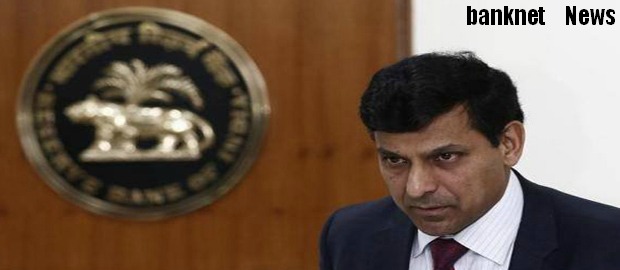

Fourth Bi-monthly Monetary Policy Statement, 2015-16 By Dr. Raghuram G. Rajan, Governor, RBI - Sept 29, 2015 - Full Text
Policy Stance and Rationale
12. In the bi-monthly policy statement of August, the Reserve Bank indicated that further monetary policy accommodation will be conditioned by the abating of recent inflationary pressures, the full monsoon outturn, possible Federal Reserve actions and greater transmission of its front-loaded past actions. Since then, inflation has dropped to a nine-month low, as projected. Despite the monsoon deficiency and its uneven spatial and temporal distribution, food inflation pressures have been contained by resolute actions by the government to manage supply. The disinflation has been broad-based and inflation excluding food and fuel has also come off its recent peak in June. The Federal Reserve has postponed policy normalisation. Markets have transmitted the Reserve Bank’s past policy actions via commercial paper and corporate bonds, but banks have done so only to a limited extent. The median base lending rates of banks have fallen by only about 30 basis points despite extremely easy liquidity conditions. This is a fraction of the 75 basis points of the policy rate reduction during January-June, even after a passage of eight months since the first rate action by the Reserve Bank. Bank deposit rates have, however, been reduced significantly, suggesting that further transmission is possible.
13. Looking forward, inflation is likely to go up from September for a few months as favourable base effects reverse. The outlook for food inflation could improve if the increase in sown area translates into higher production. Moderate increases in minimum support prices should keep cereal inflation muted, while subdued international food price inflation should continue to put downward pressure on the prices of sugar and edible oil, and food inflation more generally. It is important that pro-active supply-side management by the government be in place to head off any food price pressures should they materialise, especially in respect of onion and pulses. The pass-through of the recent depreciation of the rupee will have to be carefully monitored, although benign crude prices should have an offsetting effect. Taking all this into consideration, inflation is expected to reach 5.8 per cent in January 2016, a shade lower than the August projection
14. The modest pick-up in the growth momentum in the first half of 2015-16 benefited from soft commodity prices, disinflation, comfortable liquidity conditions, some de-clogging of stalled projects, and higher capital expenditure by the central government. Underlying economic activity, however, remains weak on account of the sustained decline in exports, rainfall deficiency and weaker than expected momentum in industrial production and investment activity. With global growth and trade slower than initial expectations, a continuing lack of appetite for new investment in the private sector, the constraint imposed by stressed assets on bank lending and waning business confidence, output growth projected for 2015-16 is marked down slightly to 7.4 per cent from 7.6 per cent earlier (Chart 2). Concurrent indicators also suggest that the new GDP series shows higher growth than would the old series, which necessitates recalibrating old measures of potential output and the output gap to the new series.
15. Since our last review, the bulk of our conditions for further accommodation have been met. The January 2016 target of 6 per cent inflation is likely to be achieved. In the monetary policy statement of April 2015, the Reserve Bank said that it would strive to reach the mid-point of the inflation band by the end of fiscal 2017-18. Therefore, the focus should now shift to bringing inflation to around 5 per cent by the end of fiscal 2016-17. In this context, the weakening of global activity since our last review suggests that commodity prices will remain contained for a while. Still-low industrial capacity utilisation indicates more domestic demand is needed to substitute for weakening global demand in order that the domestic investment cycle picks up. The coming Pay Commission Report could add substantial fiscal stimulus to domestic demand, but the government has reaffirmed its desire to respect its fiscal targets and improve the quality of its spending. Under these circumstances, monetary policy has to be accommodative to the extent possible, given its inflation goals, while recognizing that continuing policy implementation, structural reforms and corporate actions leading to higher productivity will be the primary impetus for sustainable growth. Furthermore, investment is likely to respond more strongly if there is more certainty about the extent of monetary stimulus in the pipeline, even if transmission is slow. Therefore, the Reserve Bank has front-loaded policy action by a reduction in the policy rate by 50 basis points. Given our year-ahead projections of inflation, this ensures one year expected Treasury bill real interest rates of about 1.5-2.0 per cent, which are appropriate for this stage of the recovery.
16. While the Reserve Bank’s stance will continue to be accommodative, the focus of monetary action for the near term will shift to working with the Government to ensure that impediments to banks passing on the bulk of the cumulative 125 basis points cut in the policy rate are removed. The Reserve Bank will continue to be vigilant for signs that monetary policy adjustments are needed to keep the economy on the target disinflationary path.
17. The fifth bi-monthly monetary policy statement will be announced on December 1, 2015.
Assessment ... Read more
Policy Stance and Rationale ... Read more
Banking Structure... Read more
Financial Markets ... Read more
Currency Management... Read more
RBI Monetary and Credit Policies (1999-2016) - Notifications, Press Releases, Reports - Click here

BANKING

FINANCE

INSURANCE

TECHNOLOGY

Foreign Exchange


